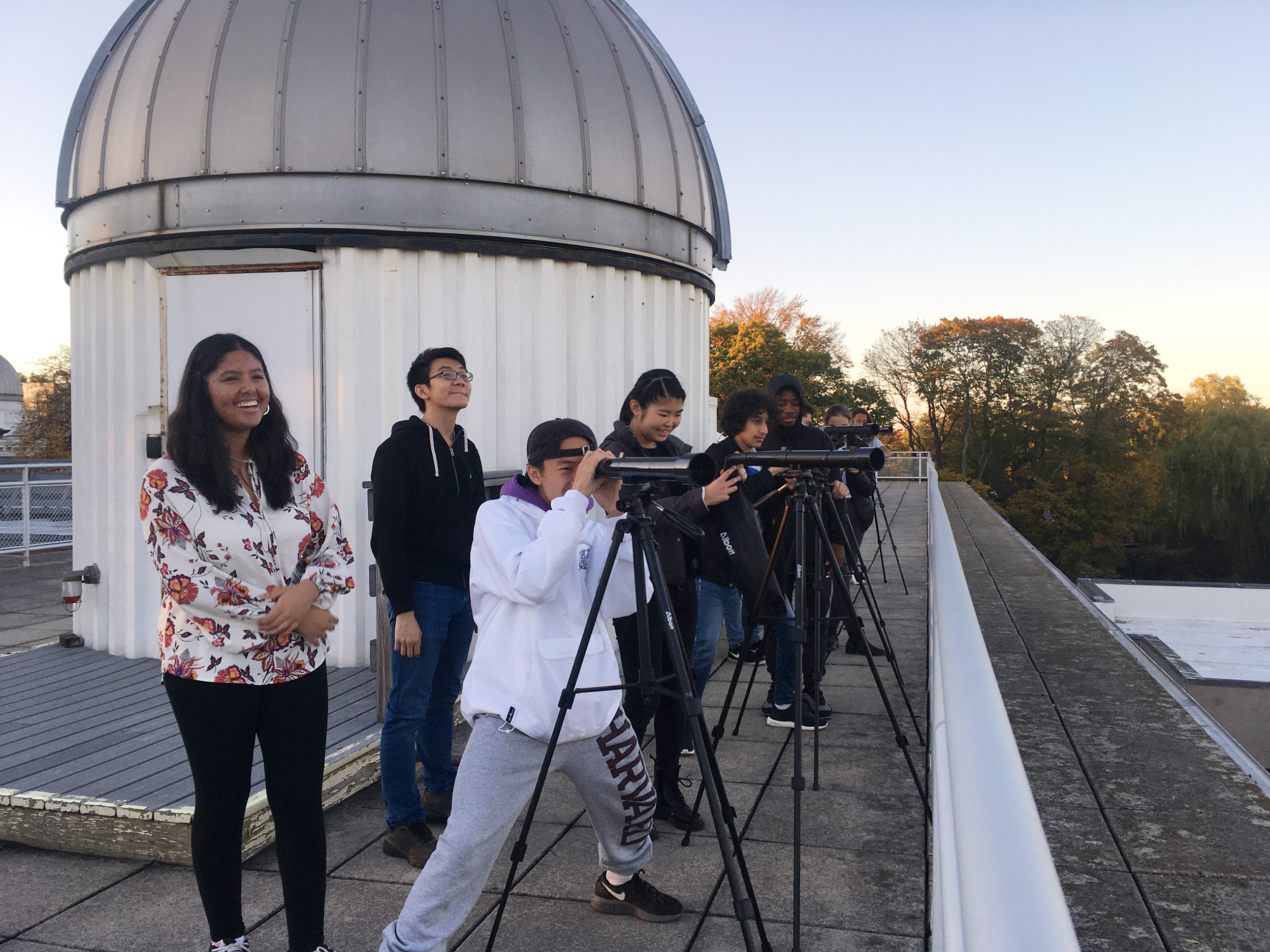
Before campuses emptied, local high school students were able to conduct their research at the Center for Astrophysics | Harvard & Smithsonian.
Photos courtesy of CfA
From hands-on to virtual
Local teens learn how to be scientists through Harvard-MIT program
A group of area high school students spent the past year learning how to be scientists. After presenting their final projects, their mentors and teachers agreed that they had indeed made the cut.
It was through the Harvard-MIT Science Research Mentoring Program (SRMP) that the Cambridge Rindge and Latin School (CRLS) and Bedford High School students worked on original astrophysics research. For four hours each week, the students went to the Center for Astrophysics | Harvard & Smithsonian (CfA), MIT’s TESS Science Center, or its Earth, Atmospheric, and Planetary Sciences Department.
With the emptying of campuses, their research went virtual, working with Harvard and MIT astrophysicists mentors who taught them how to think like a scientist, perform scientific research, make predictions, interpret findings, present conclusions, work with data from a variety of telescopes, and even use Galileoscopes owned by the Harvard-MIT SRMP program.
The students recently presented their yearlong research projects to each other, their mentors, teachers, and even Cambridge Mayor Sumbul Siddiqui.
“The cutting-edge research and the hard work — all that you’ve dedicated yourselves [to] in the last year — I can’t imagine having accomplished such things as a high school student. I’m really, really impressed by all I’ve seen,” said Siddiqui, who went on to thank Harvard and MIT for their partnership and the mentors who dedicated time to the students their projects.
The high school students studied everything from exoplanets, to black matter halos, to black holes, to how to determine if stars are young or old. CRLS student Greggy Bazile, the program’s first-ever artist, studied exploration and discovery through the lens of art. He created an infographic to spur additional interest in the TESS catalog of planetary discoveries. Bazile is also credited with the program’s new logo.

Faith Rounds and Kikyo Hattori, both from CRLS, drew on their love of coding to create an app to help further explain the project and engage others in their growing interest of astrophysics.
Together with their mentor Tansu Daylan of MIT, Kartik Pingle and Jasmine Wright wrote a paper — currently in review at The Astrophysical Journal — about their discovery of two sub-Neptunes and a super-Earth orbiting sun-like star.
Many of the students were asked if they had plans to continue their research – whether with the current teams, or perhaps even continuing this line of study when in college. Participants seemed eager to continue to continue in some capacity in the future.
“I’m really happy that I found this passion for something beyond our world,” said CRLS student Anaka Landrigan, who worked on a project about young stars with fellow CRLS student Lamisha Khan.
“As an astrophysicist myself, I do often feel like the overwhelming amount of research that is needed to study every galaxy, and every star, and every planet, is a much greater task then the current cohort of scientists could possibly ever handle,” said SMRP Director Clara Sousa-Silva. “I hope that we at SRMP have proven to you that there are thousands of budding young scientists in the Boston area — and probably all over the world who could be contributing to discoveries.”
A large percentage of students attending the SMRP program come from the Cambridge Rindge and Latin School, with Sousa-Silva giving credit to physics teacher Tal SebellShavit.
SebellShavit inturn thanked the city of Cambridge, the [Science, Technology, Engineering, Art and Math] STEAM Initiative, and Office of Workforce Development their support.
“And a huge congrats to these students,” said SebellShavit. “I hope you can see that you have now met some of the world’s experts in these topics who not only understand it, but also know how to explain it.
“I am blown away by these presentations and the students’ ability to persevere through COVID and continue to their work, and remotely figure out how to do these presentations,” he added.






